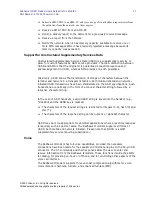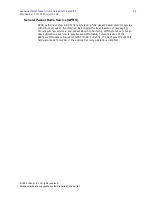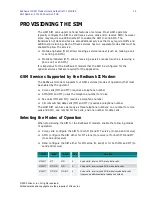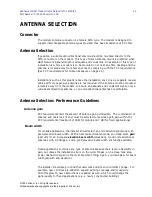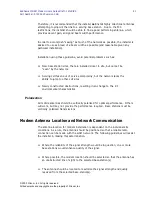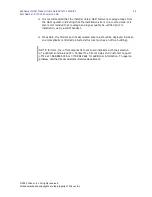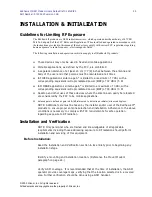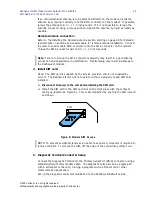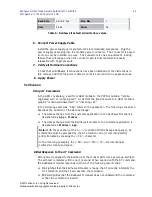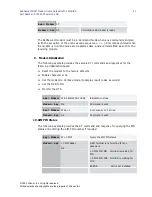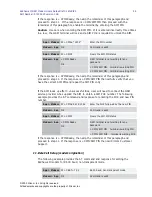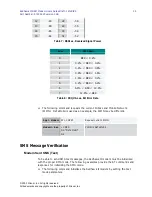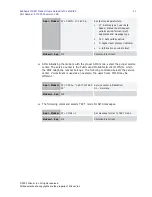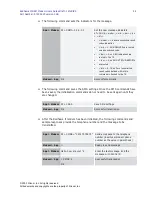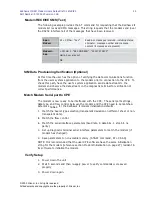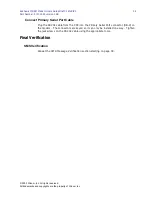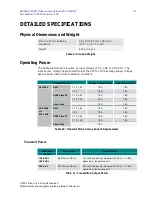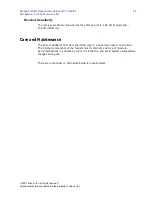
Redhawk II GSM Modem Users Guide
Draft: 10/30/00
21
Part Number: 07100020 version 00B
© 2000 Xircom, Inc. All rights reserved.
All trademarks and copyrights are the property of Xircom, Inc.
Therefore, it is recommended that the installer
not
install highly directional antennas
attempting to pinpoint the link to a serving base station. Due to the FCC
restrictions, the installer should be able to find a good performing antenna, which
provides decent gain, and good beam width performance.
In order to accomplish “seeing” as much of the network as possible, the installer is
advised to use as broad of a beam width as possible (and reasonable given any
particular installation).
Installation using these guideline, avoid potential problems such as:
!
New base station sites, that are installed closer to site, but cannot be
"seen" by the network.
!
Serving cell taken out of service temporarily, but the network lacks the
ability to jump to other cell sites
!
Newly constructed obstructions, resulting in an change to the RF
environmental characteristics.
Polarization
All mobile antennas should be vertically polarized for optimal performance. Others
will work, but may not provide the performance required. Base stations must be
vertically polarized transmissions
Modem Antenna Location and Network Communication
The antenna location for modem installation is dependent on the individual site
conditions. As a rule, the antenna should be positioned so that a reliable radio
connection can be made with the GSM network. The following guidelines will assist
the installer in making this determination.
!
Where the reliability of the signal strength would be in question, one or more
base stations would enhance quality of the signal.
!
Where possible, the modem location should be selected so that the antenna has
an unobstructed line of sight to the selected base-station(s)
!
The antenna should be located to maximize the signal strength and quality
received from the selected base-station(s).











